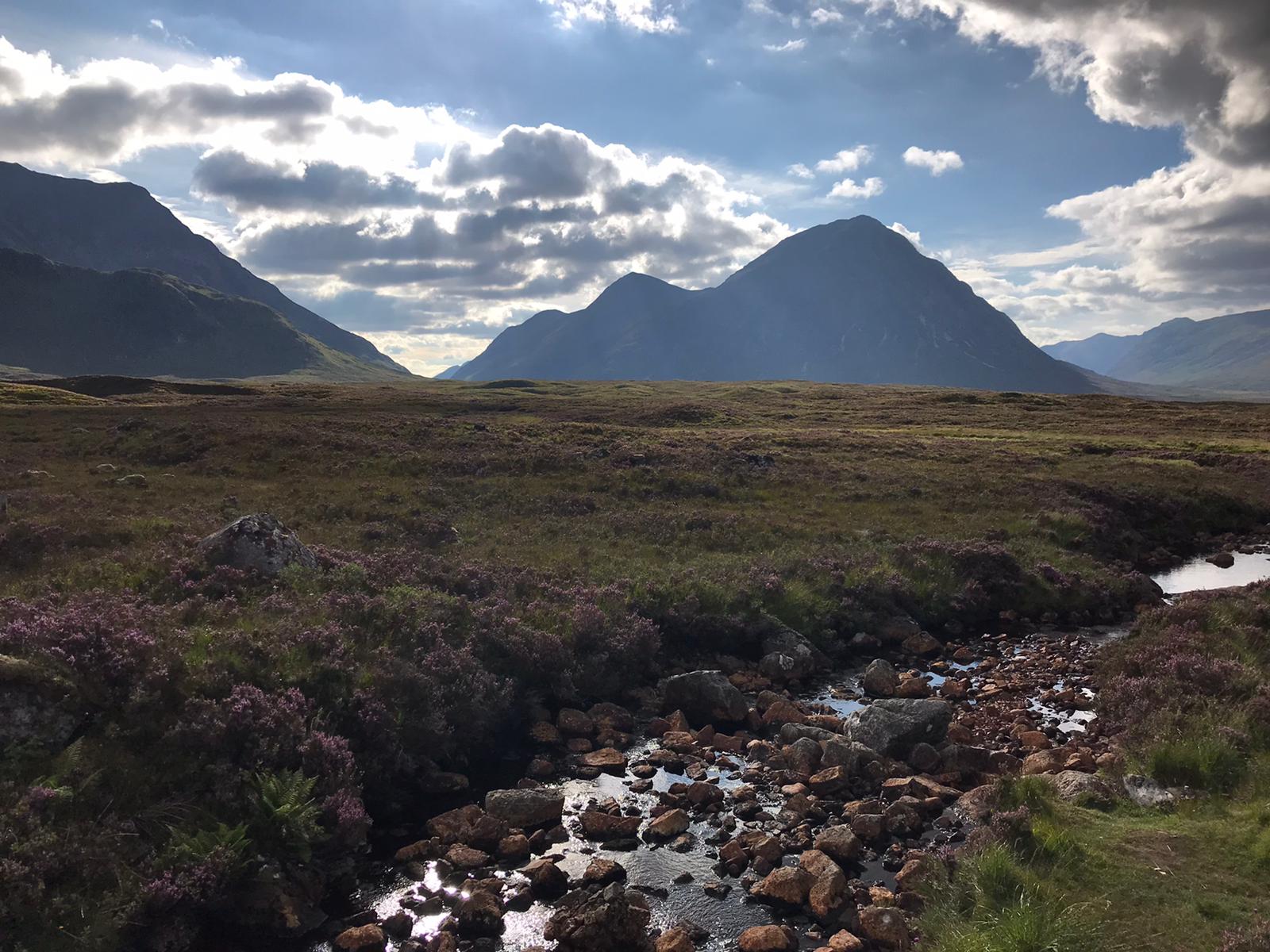
Do you have a “holy” place?
What is that exactly? A place where you meet God? A place of healing? An anywhere place of intense natural beauty and wonder? All of the above? Whatever/wherever it is, there is something indefinable about a holy place, and yet, you know when you are in one.
Is it possible to find such a place in this mixed up Corona world? Maybe this is the time we need to find such places.
My Earth Son returned from Israel on the wave of the greatest rise in Covid cases in the world. He had to quarantine at home for fourteen days which, all things considered, was certainly not the hardship lockdown was for him in an airless flat in Jerusalem with a high fever and likely case of coronavirus. He survived all that, but like the rest of us, was feeling the effects of Corona fatigue. Every night, the news is the same. This thing just goes on and on and on…
We all want to get away from it. But where can you go? For us, America is off limits. Europe is open one day, closed the next. At the last minute, Scotland began to open. We headed north.
Our itinerary involved driving six hours from Cambridge to Edinburgh where we planned to stay four nights before heading west to Loch Lomond. We originally thought to end our trip there, but then decided to continue all the way to the coast to the Islands of Mull and Iona.
Except for Edinburgh, Scotland was unexplored territory for us. The appeal in our Corona getaway was that we could drive (so no masks on public transportation!), and that we could do a lot of walking in the Scottish hills to combat our Corona fatigue and all the weight we’ve gained sitting at home these last five months.
We were not looking for a holy place. Whenever Earth Son is in need of refreshment, he heads for the hills. So to the hills we went.
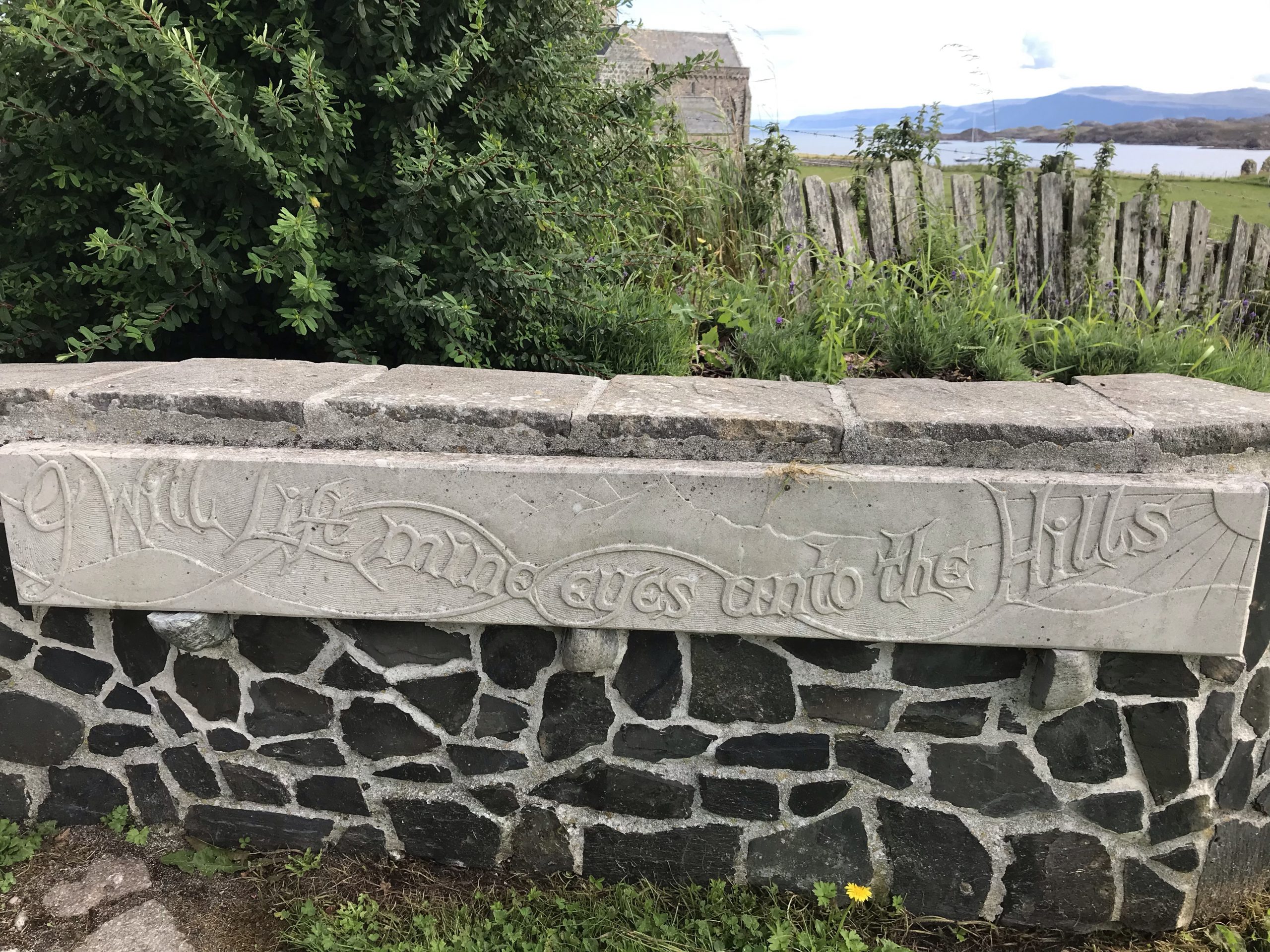
How do you find a holy place, even if you’re not looking for one?
Step One. Holiness begins with lifting, opening yourself to the Creator of those hills, as the Psalmist says, “to the Lord who made heaven and earth.” The holy place isn’t manmade. Holiness is living, organic, a place where you can breathe and the internal view is as unlimited as the external.
Moses found himself on “holy ground” in the most unlikely of places—herding sheep in the desert wilderness. He stood in front of a burning, yet unconsumed bush and had his viewpoint transformed from “I can’t do this; find somebody else,” to “God makes all things possible.”
That doesn’t mean the journey back to Egypt was an easy one for Moses. Holy places often teach us about endurance.
I am no longer as nimble as a Highland sheep. The spongy, peaty hillsides of Scotland are easy on the knees, but they also have a downside. They can be slippery. I lost my footing and did a roly-poly hillslide. Nothing like having your grown son watch you do an undignified roly-poly down the hill through the sheep turds.
We are in Iona, where St. Columba established the first Christian church in pagan Britain in the seventh century. From here, Christianity spread into northern England. These first Celtic Christians were characterized by their cheerful natures, their dedication to prayer and the gospels which inspired a remarkable artistic expression, most famously in the Book of Kells, and above all, living simply in the service of others in the ways of Christ’s teaching.
The wonderful Benedictine Iona Abbey was built on the site of Columba’s original church. But this is not what makes it a holy place.
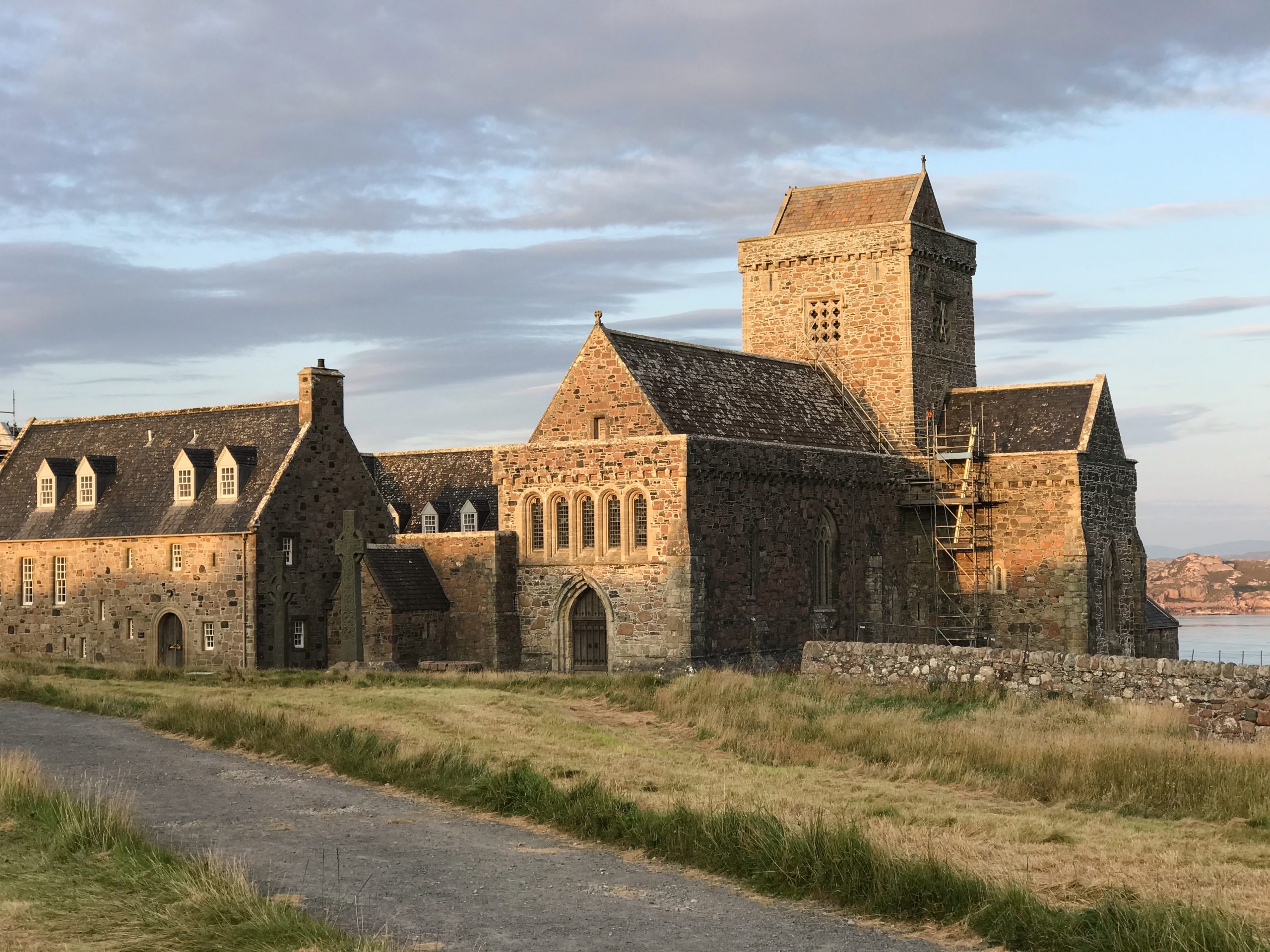
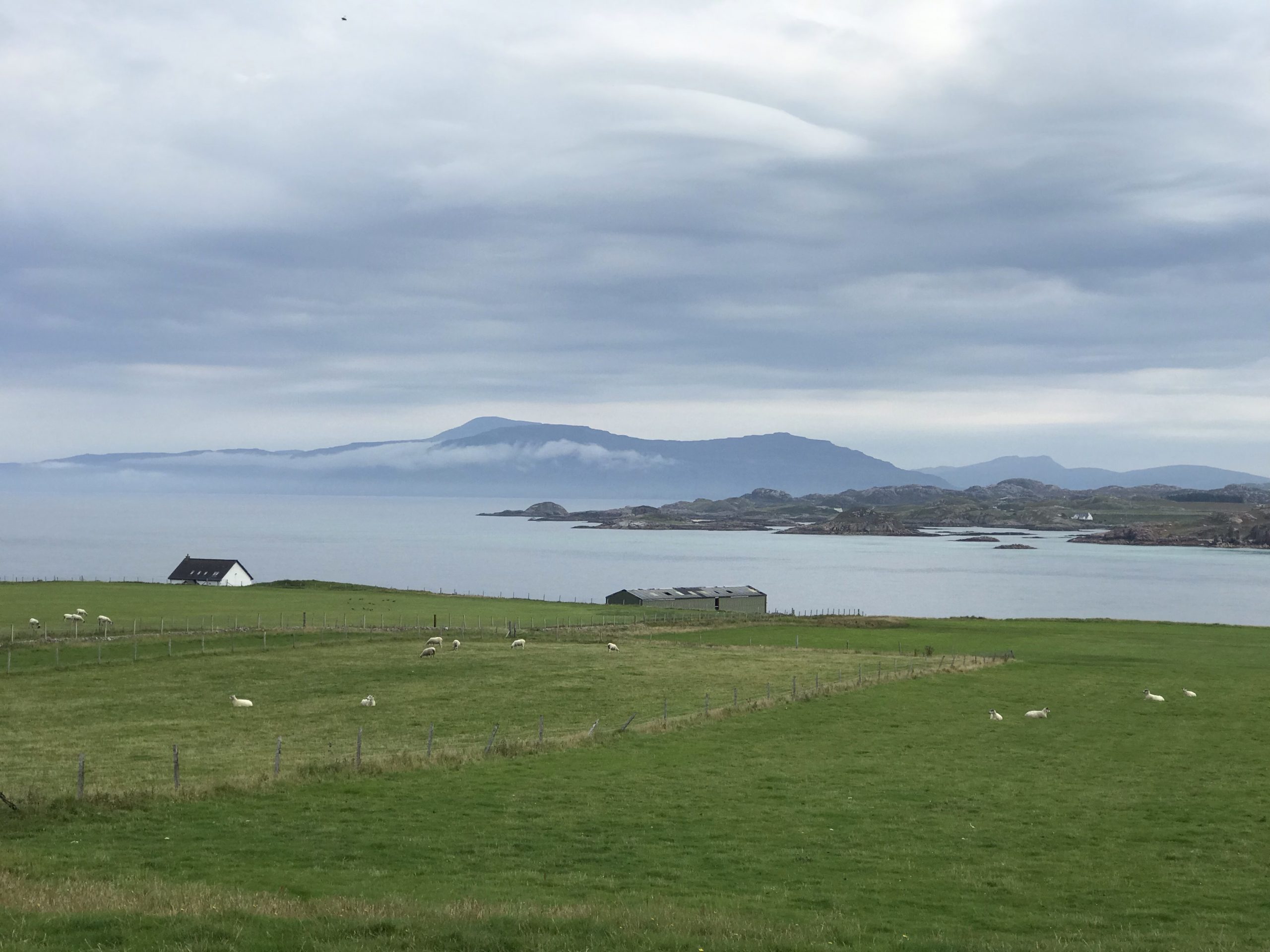
After my bruising roly-poly, I have blood, dirt, and sheep do all over me. I am a mess and in need of cleansing. But I get up, and trying to emulate Columba, cheerfully keep climbing the hill (albeit more carefully this time). At the top of the hill is one of the most expansive, glorious views I’ve ever seen in my life. I can see the entire island, plus all the other islands that surround the one I’m standing on. I can see the endless stretch of the sea and then the sky that soars above it. Massive layers of clouds form patterns with the light and halo the islands in small clusters that look like the tufts of wool shed by the hill trekking sheep.

I am in awe of this vision of Creation in the same way Columba must have been when he first arrived from Ireland fourteen hundred years ago. This is where the Celtic cross originated with its encircled form signifying the unity of God’s Creation in Christ. In Christ, we are complete.

I know I am in a holy place when I sense that connection. Others have felt it too, I imagine, as I stand next to the cairn of stones overlooking this view. I am not alone in my wanderings, in my disquiet, in my fatigue. There are those who have gone before me.
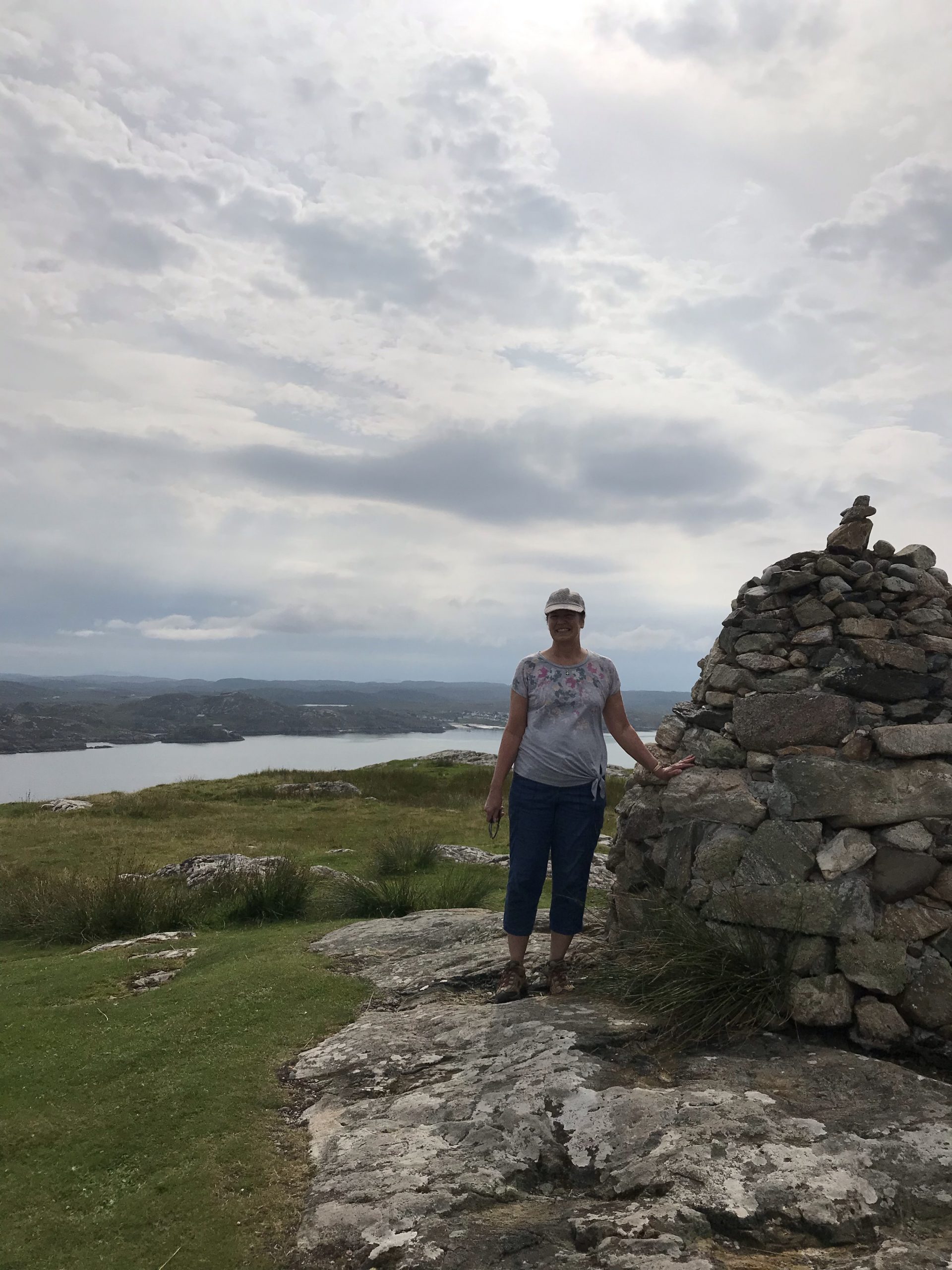
God said to Moses, “I am the God of your father, the God of Abraham, the God of Isaac, and the God of Jacob.” Exodus 3:6
Step Two. A holy place connects you, not to something within yourself, but to something greater than yourself.
An overheard conversation went something like this:
He: “I find this place haunting.”
She: “I find it very humbling.”
There is an absolute stillness here that I have never experienced before. Occasionally a sheep bleats. That’s it. I am not the center of the universe here; I am a participant. For those who find this unsettling, a holy place can be uncomfortable. The shadow of the cross either haunts or liberates.
The humbling of the holy place is what cleanses us and frees us. In the face of my smallness against this majesty, His majesty, I am reminded of the goodness of God. In the quiet, I am freed from distraction. In the holy place, all that is required is that I listen.
Nothing life changing has transpired. Rather, our perspective has been rebalanced. The Corona world still exists, even in the holy place. But what began as an escape has turned into an unexpected journey back to wholeness, back to mystery.
Step Three. A holy place celebrates mystery. The unseen. This is often called faith.
The truth is, you probably don’t need to go far to find your holy place. It may be closer than you think.
Although I live in a city famed for its beautiful university, I am actually surrounded by blocks of uninspiring flats and an architectural mish mash of ugly new medical research buildings. In the middle of all this modern aesthetic disharmony lies a “country park” created to convince us we are living close to nature, and for the last five Covid-restricted months I daily circled its perimeter in a daze of resignation.
Until one early evening, as I approached the park I heard the grass singing. I emerged from my daze and stopped to listen. When I walked into the grass, the singing stopped. When I walked back onto the path, the unmistakable chorus of birdsong started up again. Where were they? Apparently hidden in the grass. Unseen. Invisible. But filling me with joy and wonder.
I discovered skylarks. Birds with sky in their name but building their nests on the ground. Like me, except I am tired of being grounded while aspiring to fly away. The skylarks would take to the sky soon enough. But for this grounded season, they were content with their small space in creation and rejoiced in it. Their evening song reconnected me to all that is holy even though I didn’t see it that way then.
Our trip to Scotland has been a gift in many ways. But in the vast beauty of this quiet island, I have started to understand the true nature of “holy ground.”

“The earth is the Lord’s, and everything in it, the world, and all who live in it; for he founded it upon the seas and established it upon the waters.
“Who may ascend the hill of the Lord?
Who may stand in his holy place?
He who has clean hands and a pure heart”
Psalm 24


Beautiful piece. I now want to visit there. Earth Son and Turd Mom. Add Dhar Woman. That is hilarious. What, pray tell, is Chris?
Holiness is an earthy business. Jesus didn’t refer to us as sheep without reason. However, be careful with names–you never know what may come your way! And yes, you must make the pilgrimage to Iona!
How I long to have been there with you.
For now, I am a sailor without a ship, but my Captain has plans for me- so, I am still and will wait for his command.
How lovely your words and photos are. They refresh my soul.
Thank you dear friend
Those seventh century Christians were sailing in the dark as well. But they knew who their Captain was and trusted Him. In the twenty-first century, our God is still trustworthy. He will continue to refresh you and lead you, Suzanne, to where you need to go.